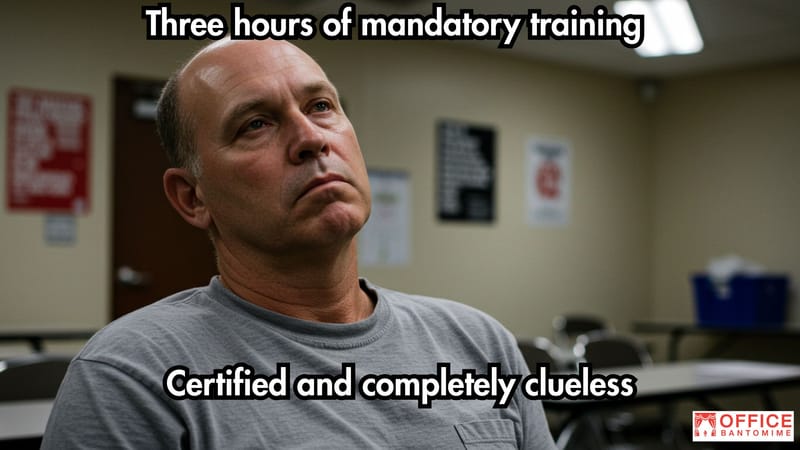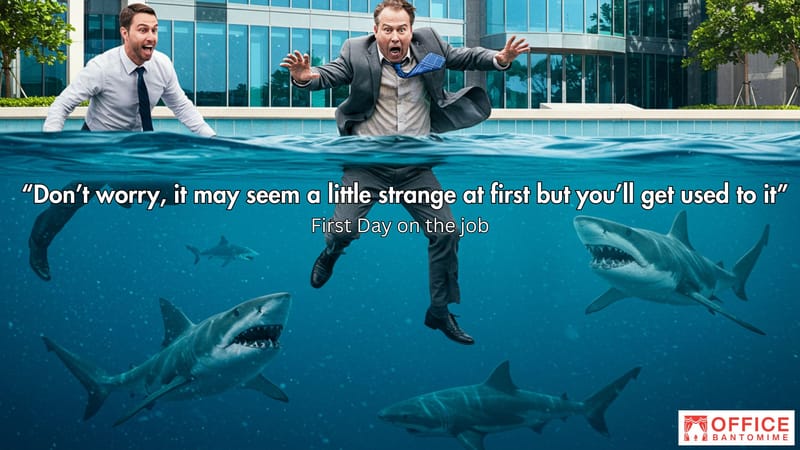Silent No More: Empowering Yourself to Conquer Tumbleweed Moments
Have you ever spoken up during a meeting but had no reaction to your question or statement? It's the so-called tumbleweed moment.
What is a tumbleweed moment? A period of dead air or stony, unresponsive silence?
Picture this: you've just cracked a hilarious joke, raised a thought-provoking question, or made a significant point during a meeting. But there's one problem – the deafening silence that follows. It's like a tumbleweed moment, and it's happening far too often in today's organizations.
Have you ever wondered why this awkward silence is becoming the norm? Is it because people are disengaged, or do they lack the information to respond effectively? The truth is, it's a perplexing phenomenon, and it's time we dissected it.
Consider this scenario: when a pilot announces an impending crash landing, everyone on the plane springs into action. There's no hesitation; people pay attention and react swiftly. So why is it that in meetings, crucial questions often go unanswered?
There are a few plausible explanations. Firstly, there's the fear of looking foolish or offending the speaker. People may be reluctant to speak up, fearing the judgment of their peers. It's as if they're trapped in a web of social pressure.
Another possibility is that individuals are waiting for someone else to take the lead. They believe that someone more knowledgeable or authoritative will chime in with a response, so they keep quiet. It's a classic case of the bystander effect but in the context of meetings.
And let's not forget anxiety, the silent killer of creativity and collaboration. The fear of being negatively judged can be paralyzing. It leaves speakers feeling embarrassed and demotivated, while their insightful contributions fade into oblivion.

"Perhaps the real underlying issue lies in the fact that someone already holds the solution but doesn't find it compelling enough to share. Crafting a strategy to help the meeting's host tackle the problem takes precedence over indulging in eBay bidding distractions on a phone or laptop. The situation can get even more disheartening if, as the person posing the question, your attempts at humour fall flat.
Tumbleweed moments can sprout from various situations. Teachers, for instance, grapple with this challenge daily, though they might expect distraction in their classrooms. Children's playful antics are somewhat par for the course. On the flip side, astronauts have likely encountered communication tumbleweed moments with ground control. This may not be due to a breakdown in communication, but rather because ground control might be taking a leisurely lunch break."

How do you conquer the tumbleweed moment?
- Patience is Key: When met with silence, resist the urge to blurt out, "Anyone?" in anxiety. Instead, exercise patience. Give it a bit more time. Consider setting a mental timer and, after counting to five or ten, gracefully move forward.
- Don't Be Intimidated: Particularly in a professional setting, where you might have authority figures in the room eager to wrap up the meeting, it's easy to feel intimidated. Remember, if you don't have the answer, there's no reason why someone else can't step in. Sometimes, a different phrasing of your question may elicit a response from someone who was previously unsure about how to contribute.
- Join the Silence with a Thought: During that pregnant pause, you can offer your own insights related to the question. If you're truly stumped, try reaching out directly to a group member you believe has knowledge of the topic under discussion.
- Skip "Any Questions?": Asking the generic "Any questions?" can be the equivalent of dropping a lump of coal into the middle of a tumbleweed moment – it doesn't spark much action. Instead, ask a specific question related to the topic at hand. Specific inquiries have a better chance of prompting a response.
Taming the tumbleweed moment is about finesse and confidence. By following these strategies, you'll be better equipped to keep the conversation flowing and ensure that those valuable questions don't go unanswered.






